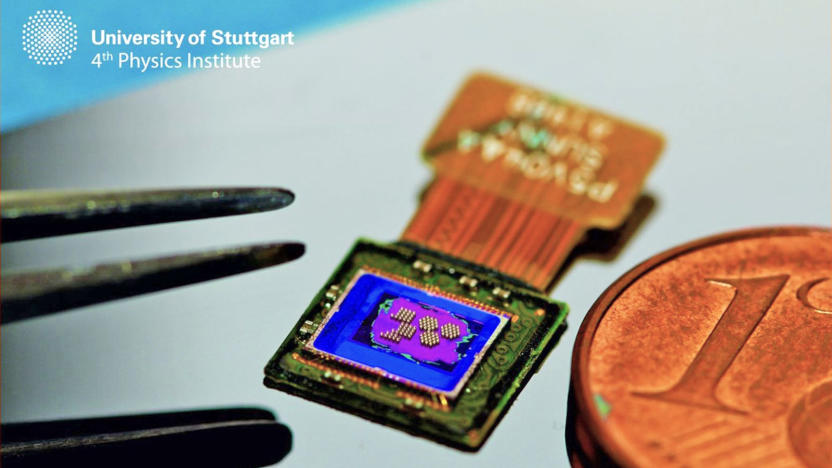universityofstuttgart
Latest

Microscopic camera could be injected into your body
You may have seen some very small cameras in your day, but nothing like this. University of Stuttgart scientist have developed a 3D-printed, three-lens camera that's just 100 micrometers (0.004 inches) across. That's small enough that you could inject into your body with a syringe -- perfect for endoscopy and other times you'd want to observe a patient's body from the inside. It currently needs to be tethered to an optical fiber, but it can focus on objects as close as 0.12 inches. You can even print unconventional lens shapes (such as rings or triangles) to fit specific shapes and goals.

eGenius electric plane takes flight with Airbus backing
It's been mere months since we introduced you to Deutschland's PC-Aero Elektra One, and now the Germans are at it again with the maiden flight of a new electric flying machine: eGenius. The aircraft successfully completed a 20-minute flight on May 26th, followed by a two-and-a-half hour trip on Sunday. Where the Elektra one boasted cruising speeds of 160 km/h (about 99 MPH), eGenius is capable of hitting 235 km/h (146 MPH) for up to 400 kilometers (248.5 miles). It sports a 60-kilowatt motor, weighs 850 kilograms (1,874 pounds), and has some big backing from the likes of Airbus. Considering its relatively limited range and equally limited capacity -- it fits two humans with a combined weight of 397 pounds -- we have a feeling it'll be a bit before we're popping pretzels on one of these bad boys.

Swarm robot project sounds ominous, uses open source
Why would you want to build a 100-strong swarm of mini robots? Well, aside from having them as your minions, you might be able to learn about "artificial self-organization," and "control in large robotic groups," which should come in useful during the inevitable robot insurrection. The swarm robot project, undertaken by the Universities of Stuttgart and Karlsruhe in Germany, aims to produce mini drones that can communicate with one another to avoid collisions, while keeping to a volume of less than three centimeters cubed. Built using open source software and hardware (full list of components is available under the GPL), the latest prototype, titled Jasmine III, achieves those goals while also being able to run "perpetually" thanks to a wireless charging platform. You can see it in close-up after the break, or hit the read link for all the geeky details.

"Flying laptop" spacecraft could "transform" in space, sort of
Impressive as they are, satellites and space probes aren't always the most versatile pieces of equipment once they're up in orbit. A new satellite developed by researchers from the University of Stuttgart's Institute of Space Systems looks set to shake things up in a pretty big way when it launches in 2012, however, even if it's not quite the "transforming" space probe that you might be imagining. Described as a "flying laptop," the satellite promises to pack a vast array of instruments and sensors, including cameras, multispectral imagers, star trackers, and GPS receivers, to name a few, all of which can apparently be completely reconfigured on the fly in space. That, the researchers say, could let the satellite switch from, say, an atmospheric pollution sensor to a near-Earth asteroid detector, an even open up some new commercial possibilities, with different groups able to rent out the satellite to perform various tasks.


